

Wars have been present on Earth for centuries. It is estimated that in the history of mankind, there have been more than 10,000 wars waged throughout the world. Additionally, there are typically multiple battles fought during the course of any given war. While all wars are horrific, with high numbers of deaths and destruction, there is one conflict that stands out as one of the bloodiest conflicts in history.
The Second World War was by far the deadliest war that this world has ever known. This conflict was truly a global war, with around 70 nations participating in battles. There were nearly 15 million military personnel and 38 million civilians who perished. War raged from the fields of Europe to the waters of the Pacific between the Allied and Axis Powers, engulfing nations across the globe in this conflict. (These are World War II’s biggest battles.)
24/7 Wall St. reviewed WWII battles from World War 2 Facts, an online database of WWII battles to identify the World War II battles with the most casualties. These battles were ranked based on the total military casualties, including killed, missing, captured, or wounded. We included supplementary information regarding total casualties on the Axis and Allied sides, as well as the troops and military assets present on both sides. We also included the start date on which these battles took place. Some supplementary information was obtained from various other military and historical sources.
Pivotal battles were fought throughout the war that turned the tide for one side or the other but these all came at great cost. The military assets and casualties from WWII would ultimately shape the new world that would rise from the ashes for many decades to come. Largely considered one of the biggest turning points in the war was the Battle of the Bulge, primarily because it was the last major offensive that Germany launched on Western Europe. Allied Forces clashed with German Panzer tanks and other Axis Forces for more than a month in the Ardennes Forest.
In what was one of the largest battles fought by U.S. troops in the Second World War, this battle raged on between Dec. 16, 1944, and Jan. 28, 1945. More than 840,000 Allied troops put a stop to the advance of 500,000 Germans with each side suffering severe casualties resulting in nearly a combined 160,000 soldiers missing, wounded, or killed. (These are the tanks, vehicles, and artillery that fought the Battle of the Bulge.)
Here are World War II battles with the most casualties:
35. Battle of Savo Island

- Allied powers present: 6 heavy cruisers, 2 light cruisers, 15 destroyers
- Axis powers present: 5 heavy cruisers, 2 light cruisers, 1 destroyer
In August 1942, a battle was waged on Savo Island, also known as the First Battle of Savo Island, or in other camps as the First Battle of the Soloman Sea. This conflict resulted in 1,135 casualties. Allied troops took a bigger hit, with 1,077 casualties, while the Axis had 58.
34. Operation Battleaxe

- Allied powers present: 20,000+ men, 220 tanks, 203 aircraft
- Axis powers present: 13,200 men, 194 tanks, 214 aircraft
The British Army offensive Operation Battleaxe took place in Cyrenaica, Libya in June 1941. This was an attempt by the United Kingdom to re-capture the city from German and Italian troops. The battle had 1,647 total casualties, 969 from the Allied powers and 678 from the Axis.
33. Battle of the Coral Sea
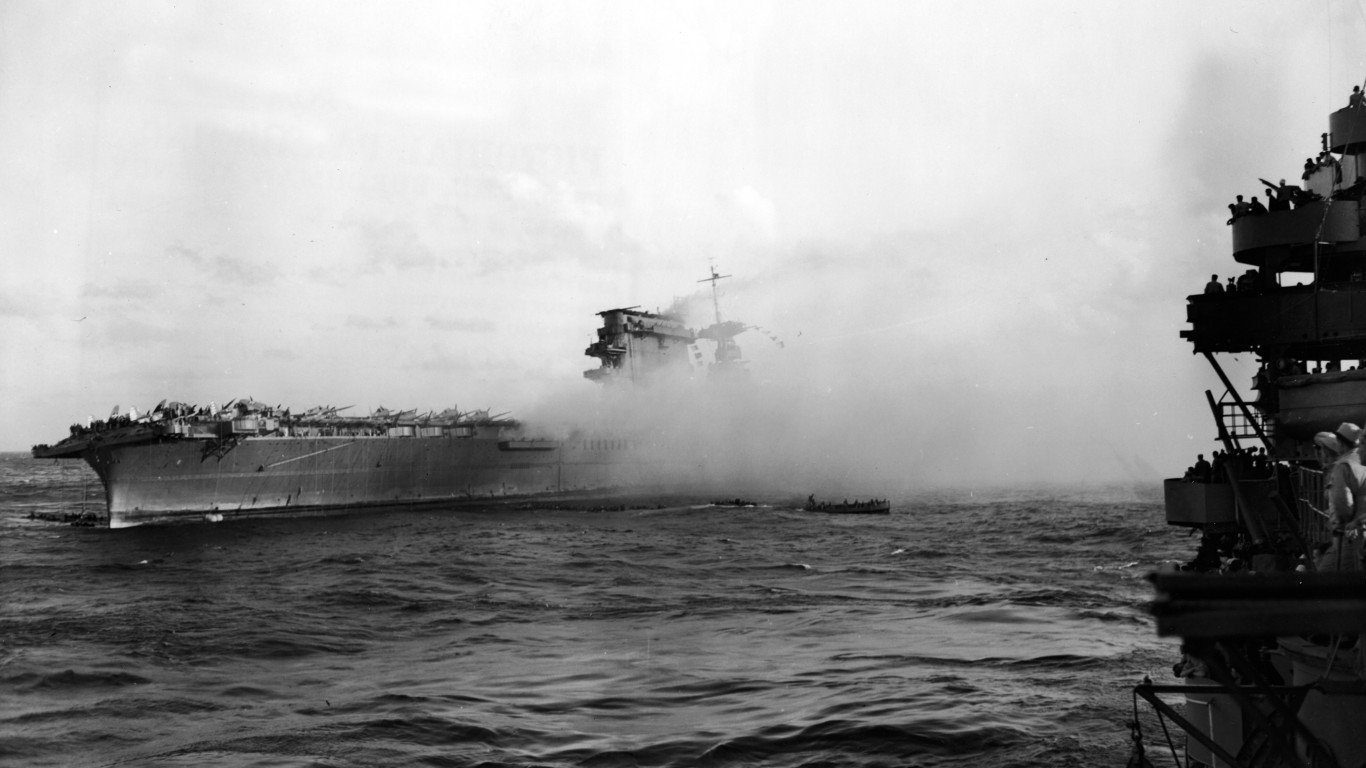
- Allied powers present: 2 fleet carriers, 9 cruisers, 13 destroyers, 128 carrier aircraft
- Axis powers present: 2 fleet carriers, 1 light carrier, 9 cruisers, 15 destroyers, 127 carrier aircraft
The Battle of the Coral Sea was a significant naval battle between U.S. and Australian forces and the Imperial Japanese Navy. Fought in the Coral Sea, aircraft carriers conducted attacks, and there were 1,656 casualties from all sides – 656 from the Allied powers and 1,000 from the Axis.
32. Siege of Bastogne
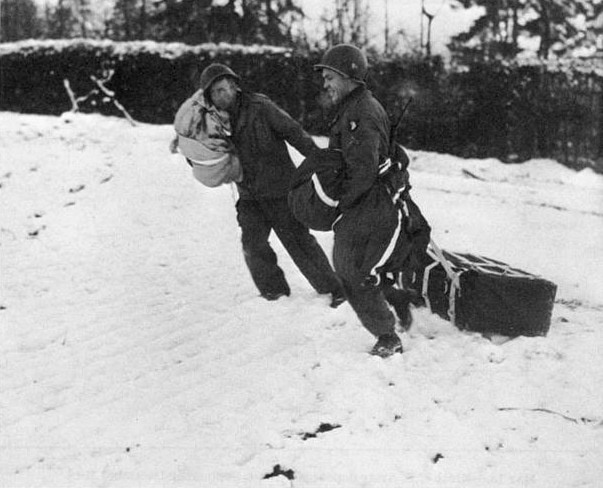
- Allied powers present: 22,800 men, 101st Airborne division, CCB 10th armored division, 705th Tank Destroyer Battalion
- Axis powers present: 54,000 men, 7 German Divisions
As part of the Battle of the Bulge, the Siege of Bastogne in Bastogne, Belgium took place in December 1944. This engagement between American and German forces saw at least 3,000 total casualties. It is not known how many German forces lost their lives, but American forces had at least 3,000.
31. Battle of the Philippine Sea

- Allied powers present: 7 fleet carriers, 8 light carriers, 7 battleships, 28 submarines, 956 aircraft, 99,000 men
- Axis powers present: 5 fleet carriers, 4 light carriers, 5 battleships, 24 submarines, 450 carrier-based aircraft, 300 land-based aircraft
This major battle occurred during the U.S. amphibious invasion of the Mariana Islands in September 1944 in the Philippine Sea. Waged between American and Japanese naval forces, the Battle of the Philippine Sea had a total of 3,096 casualties, with 109 from the Allied powers and 2,987 from the Imperial Japanese Navy.
30. Battle of Midway
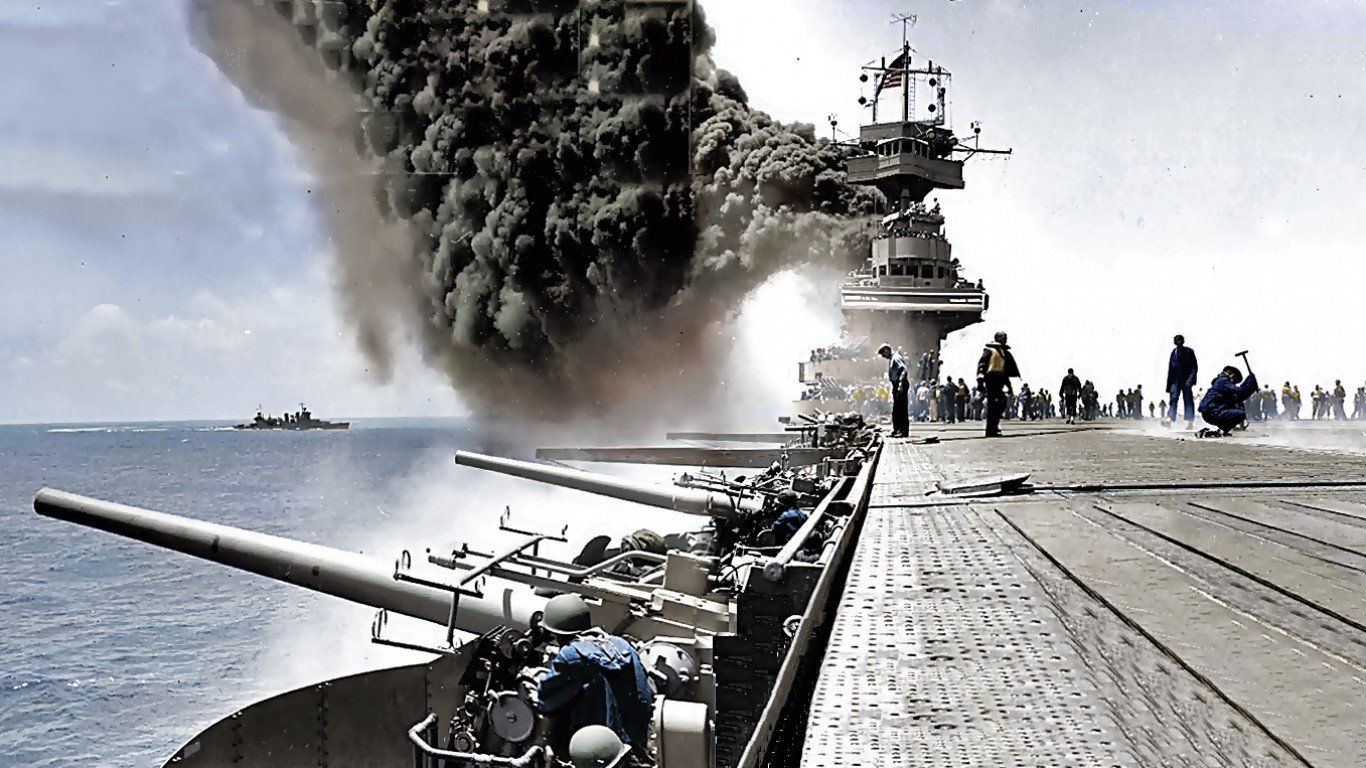
- Allied powers present: 3 aircraft carriers, 25 support ships, 233 carrier aircraft, 127 land-based aircraft
- Axis powers present: 4 aircraft carriers, 2 battleships, 15 support ships (cruisers and destroyers), 248 carrier aircraft
Taking place in the Midway Atoll in the Pacific Theatre in early June 1942, the Battle of the Midway was between American and Japanese troops. There were a total of 3,364 casualties, 307 from the Allied powers and 3,057 from the Axis.
29. Battle of Pearl Harbor
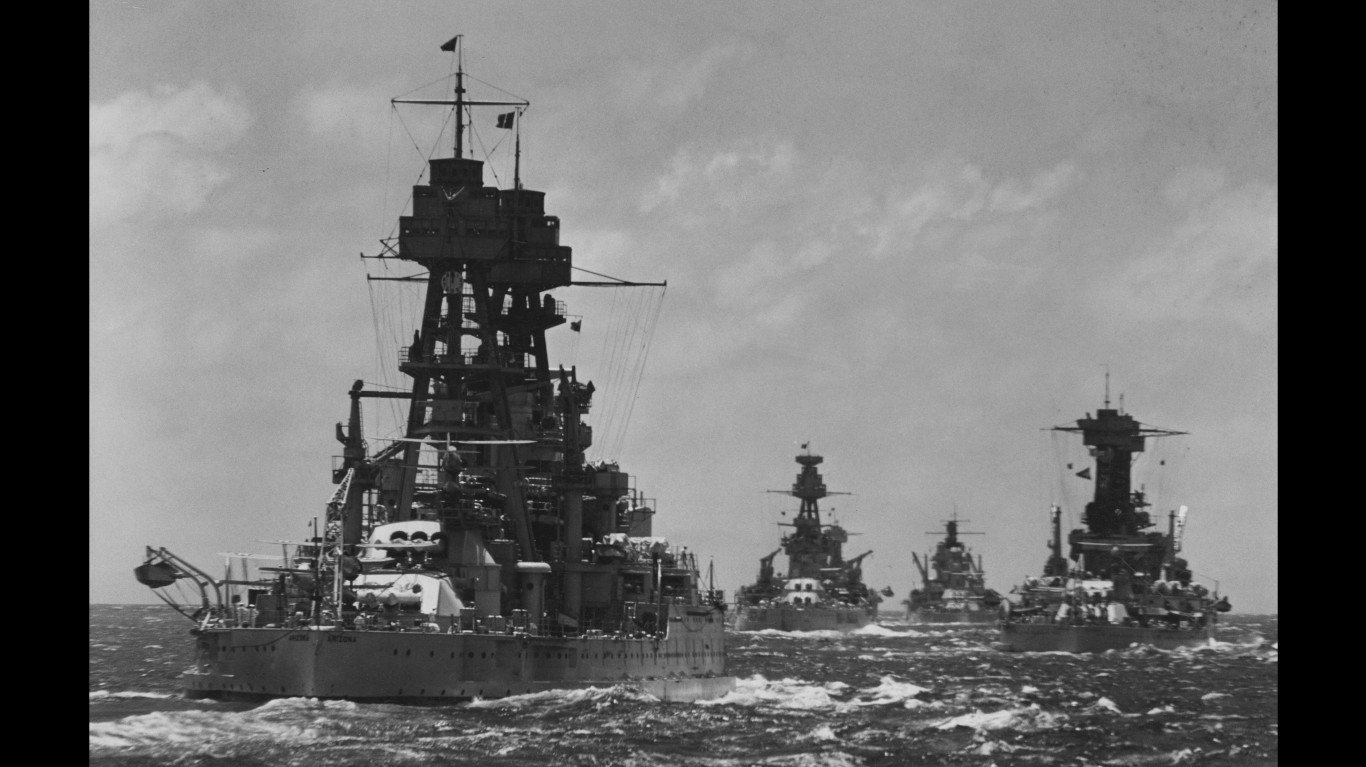
- Allied powers present: 8 battleships, 8 cruisers, 30 destroyers, 4 submarines, 390 aircraft
- Axis powers present: 6 aircraft carriers, 2 battleships, 2 heavy cruisers, 1 light cruiser, 9 destroyers, 28 submarines, 414 aircraft
At the time of this attack, the United States was a neutral party in the war. However, on December 7, 1944, in Oahu, Hawaii, the Imperial Japanese Naval Air Service conducted a coordinated attack on Pearl Harbor and other U.S. territories. The total casualties were 3,714, with the Allied powers suffering the largest loss with 3,649. The Axis had 65 losses. The United States entered the war the following day.
28. Operation Torch
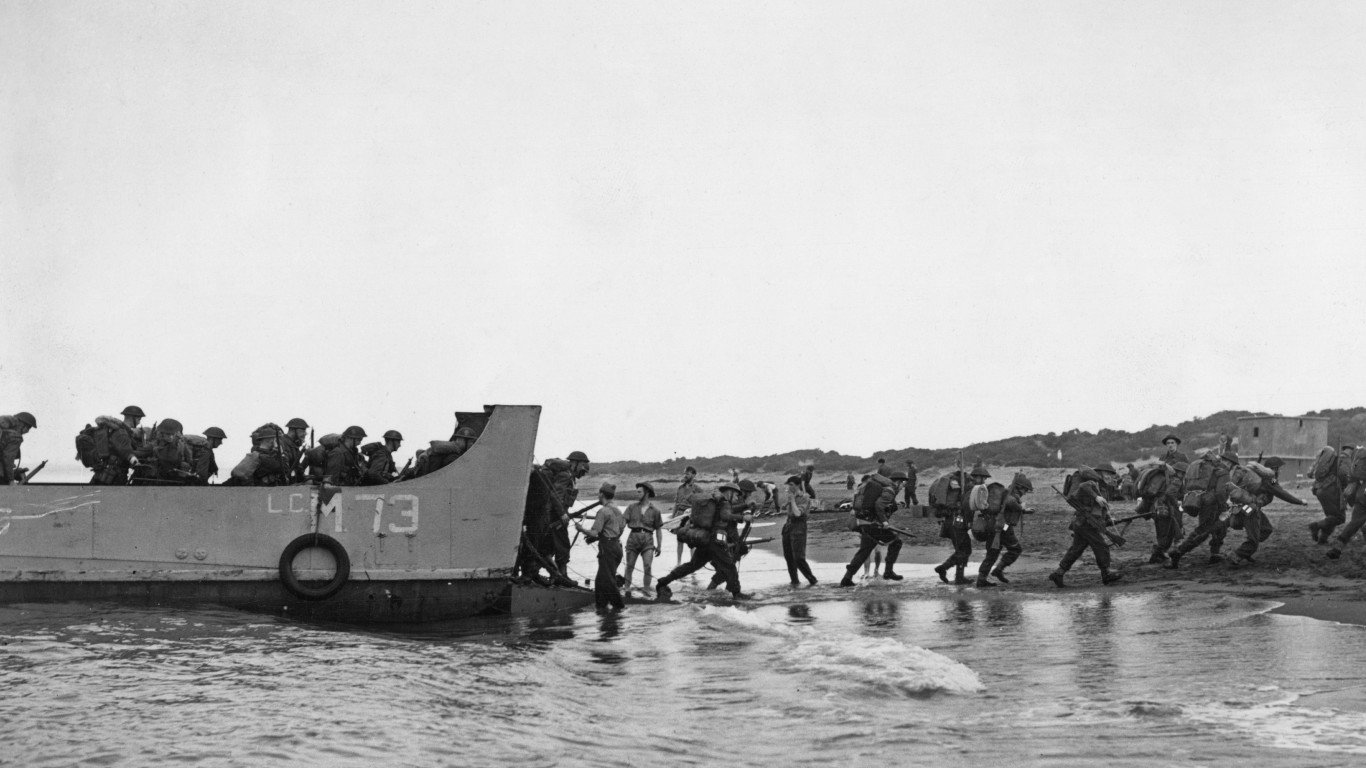
- Allied powers present: 107,000 men
- Axis powers present: 60,000 men
Conducted in Northwest Africa from November 8 – 16, 1942, Operation Torch resulted in an Allied victory but at a high cost to both sides. Total casualties were 4,542, which 1,199 from the Allied powers and 3,343 from the Axis.
27. Battle of Britain
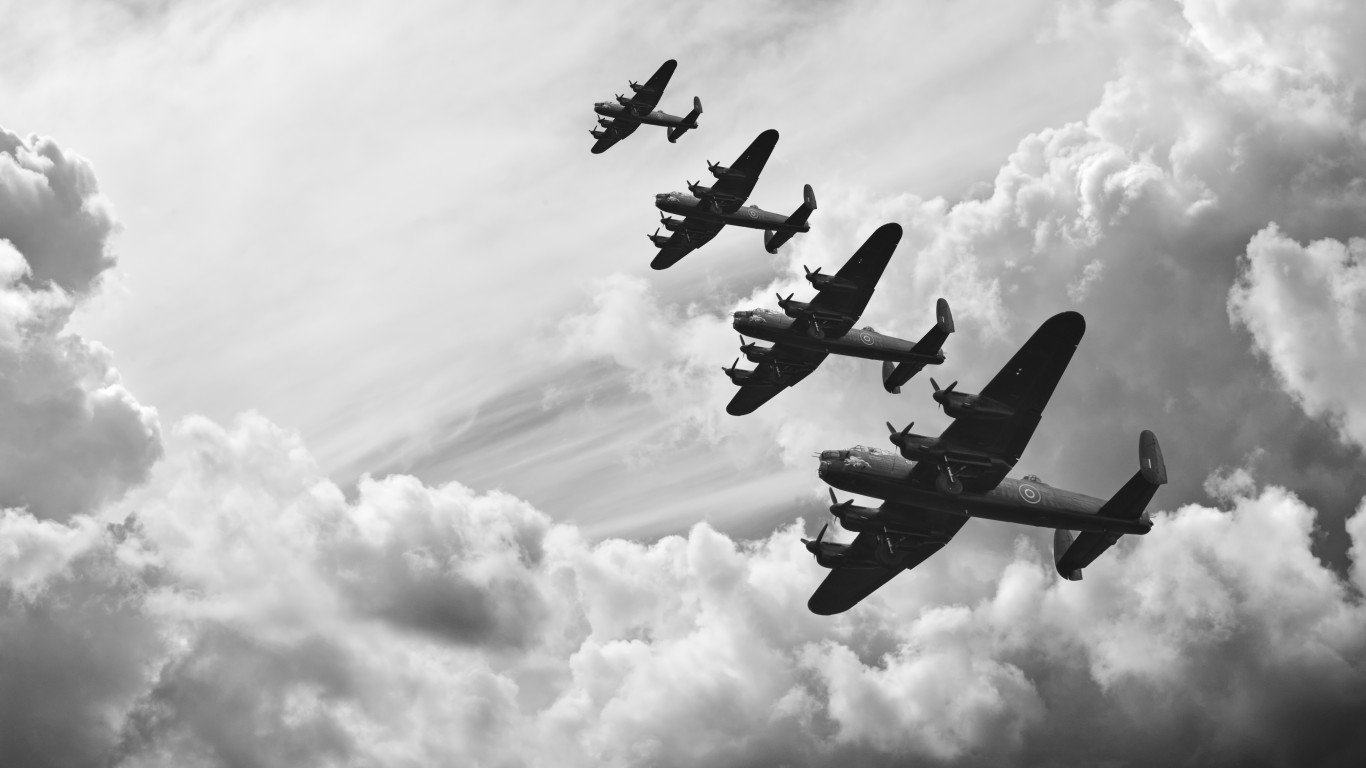
- Allied powers present: 1,963 serviceable aircraft
- Axis powers present: 2,550 serviceable aircraft
The Battle of Britain began in July 1940 and saw the Allied British Royal Air Force and Royal Navy’s Fleet Air Arm against the German Luftwaffe. It took place in the English Channel and had 5,269 total casualties, 966 for the Allied powers and 4,303 for the Axis.
26. Battle of Wake Island

- Allied powers present: 449 USMC personnel, 6 artillery, 12 aircraft, 68 Navy personnel, 5 Army personnel
- Axis powers present: 3 light cruisers, 8 destroyers, 3 submarines, heavy cruisers, 2 aircraft carriers, 2,500 infantry
In December 1941, in the U.S. territory of Wake Island, a battle took place between American and Japanese forces. This attack happened concurrently with Japan’s attack on Pearl Harbor. There were a total of 7,200 casualties – 1,200 from American forces and 6,000 from Japanese forces.
25. Battle of Tarawa

- Allied powers present: 35,000 men
- Axis powers present: 3,000 men
The Battle of Tarawa was fought on Betio Island, Tarawa Atoll, in the Gilbert Islands in November 1943 and was part of the U.S. invasion of the Gilberts, known as Operation Gilbert. There were a total of 8,504 casualties – 3,797 from the Allied powers and 4,707 from the Axis.
24. Battle of the Kasserine Pass
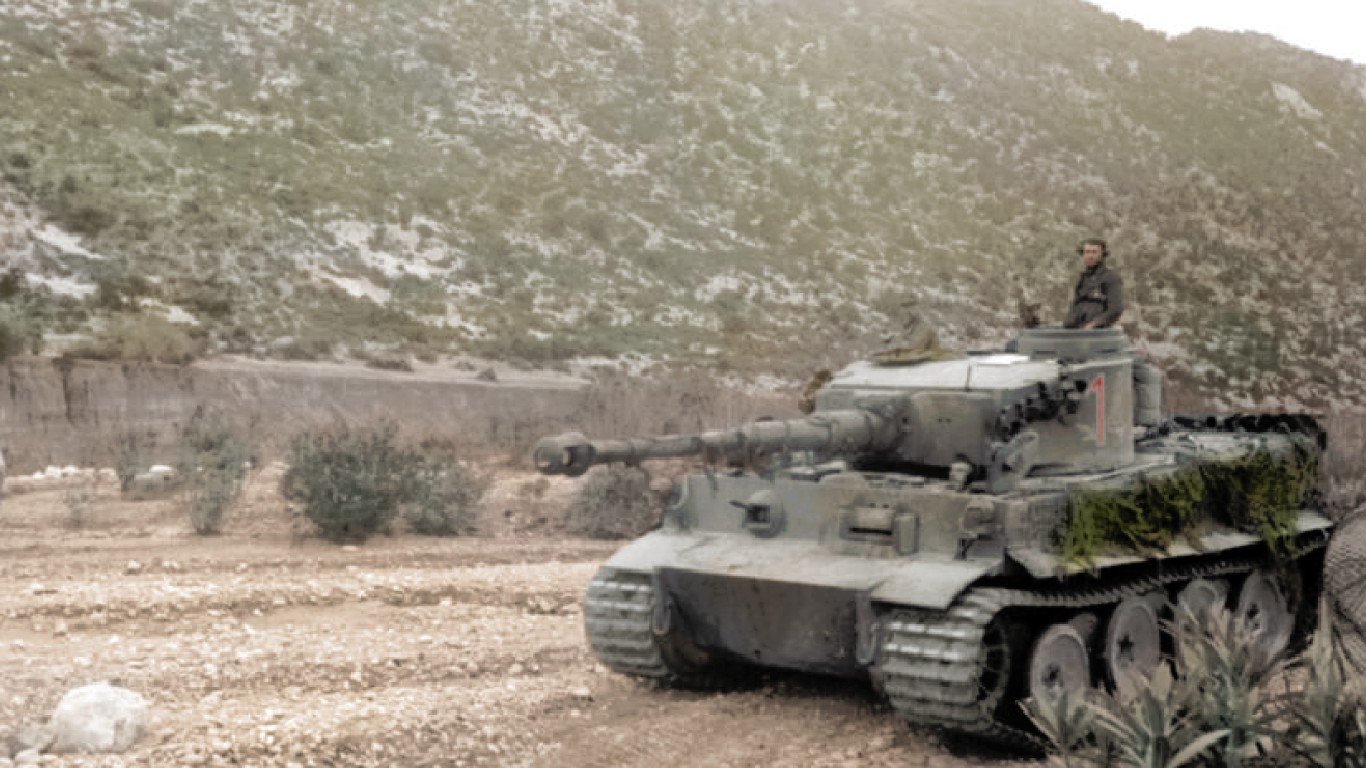
- Allied powers present: 30,000 men
- Axis powers present: 22,000 men
The Kassarine Pass is a gap in the Grand Dorsal chain of the Atlas Mountains in west central Tunisia. In November 1943, the Battle of Kassarine Pass, part of the Tunisian Campaign, took place between the Axis and Allied forces. there were 12,000 total casualties – 10,000 from Allied powers and 2,000 from the Axis.
23. Battle of Leyte Gulf
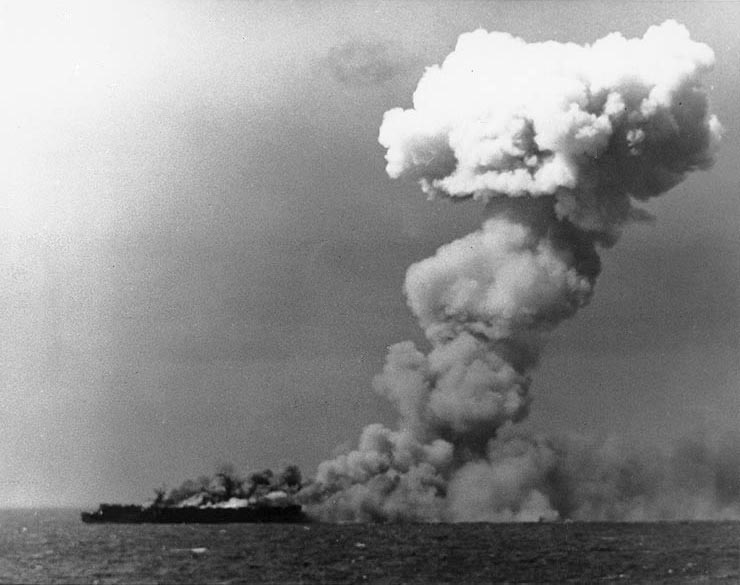
- Allied powers present: 8 fleet carriers, 8 light carriers, 18 escort carriers, 12 battleships, 24 cruisers, 141 destroyers, 1,500 aircraft
- Axis powers present: 1 fleet carrier, 3 light carriers, 9 battleships, 14 heavy cruisers, 6 light cruisers, 35 destroyers, 300 aircraft
The largest naval battle of the Second World War, the Battle of Leyte Gulf took place in October 1944 and had four separate engagements ( Battle of the Sibuyan Sea, the Battle of Surigao Strait, the Battle of Cape Engaño, and the Battle of Samar). Fought between the Allied powers of the United States and Australia, and the Axis powers of Japan, there were a total of 13,500 casualties – 3,000 from the Allied powers and 10,500 from the Axis.
22. Battle of Corregidor
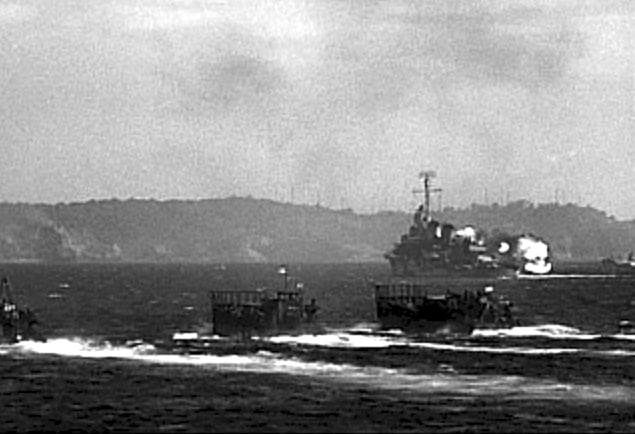
- Allied powers present: 13,000 men
- Axis powers present: 75,000 men
The Battle of Corregidor was an attempt by the Japanese Navy to recapture the island of Corregidor in May 1942. The Allied forces were victorious, but it came at a high cost – 14,900 total casualties – 12,800 were from Allied forces and 2,100 were from the Axis.
21. Battle of Peleliu
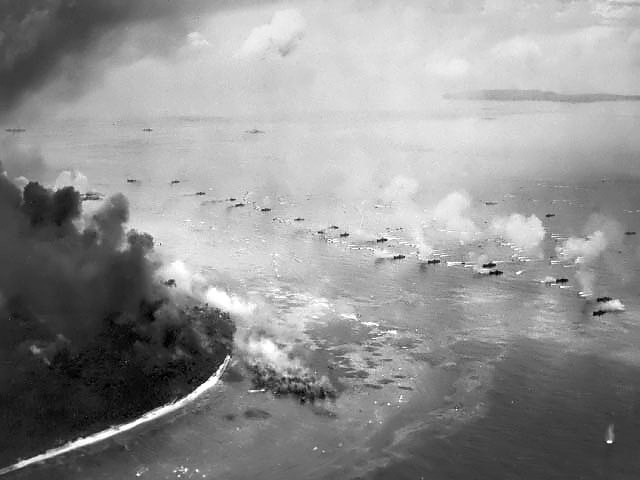
- Allied powers present: 28,484 men
- Axis powers present: 11,000 men
The Battle of Peleliu, also known to the United States by its codename Operation Stalemate II, was conducted in September 1944 in Peleliu, Palau Islands. It resulted in an American victory but there were 20,701 total casualties – 9,804 from Allied troops and 10,897 from the Axis.
20. Operation Market Garden
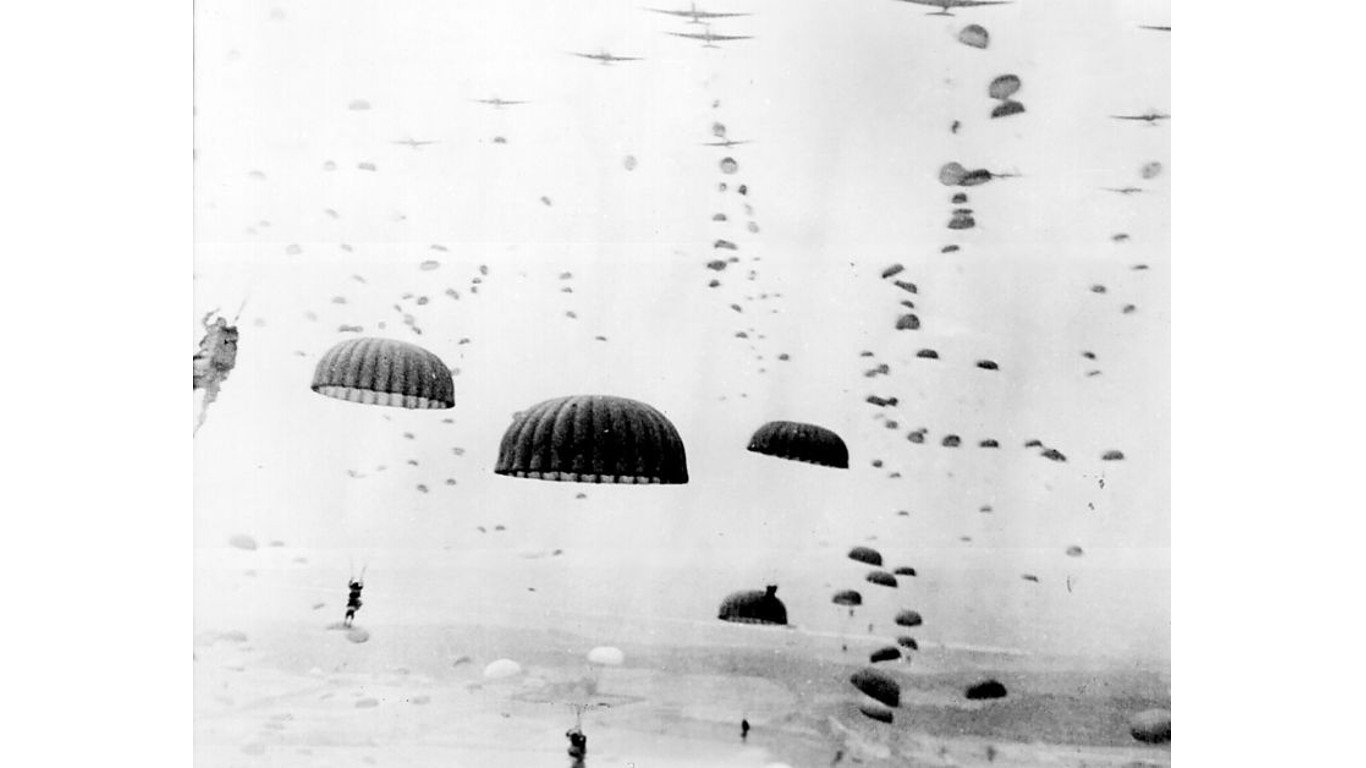
- Allied powers present: 41,628 airborne troops, 1 armored division, 2 infantry divisions, 1 armored brigade
- Axis powers present: 110,000 men, 9th and 10th SS Panzer Divisions
Conducted in the Eindhoven-Nijmegen-Arnhem corridor, Operation Market Garden took place in September 1944 in the German-occupied Netherlands. There were a total of 30,500 casualties – 17,200 from Allied troops and 13,300 from the Axis.
19. Battle of Crete
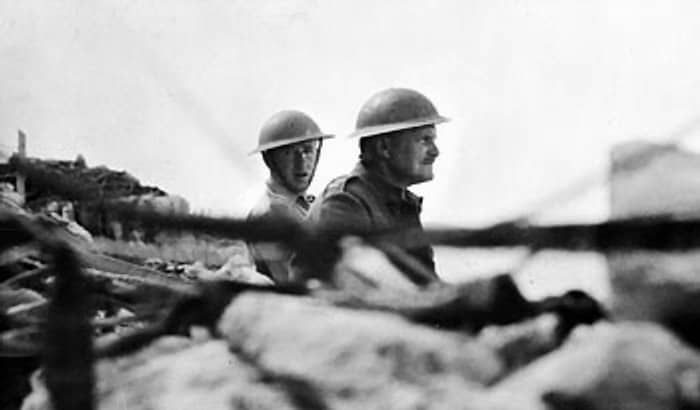
- Allied powers present: 40,000 men
- Axis powers present: 31,700 men, 500 transports, 610 aircraft
In May 1941, Allied forces fought Axis troops in Crete, Greece in the Battle of Crete, also known as Operation Mercury. The conflict resulted in an Axis victory and saw 30,528 casualties – 23,830 from Allied troops and 6,698 from the Axis.
18. Battle of Saipan
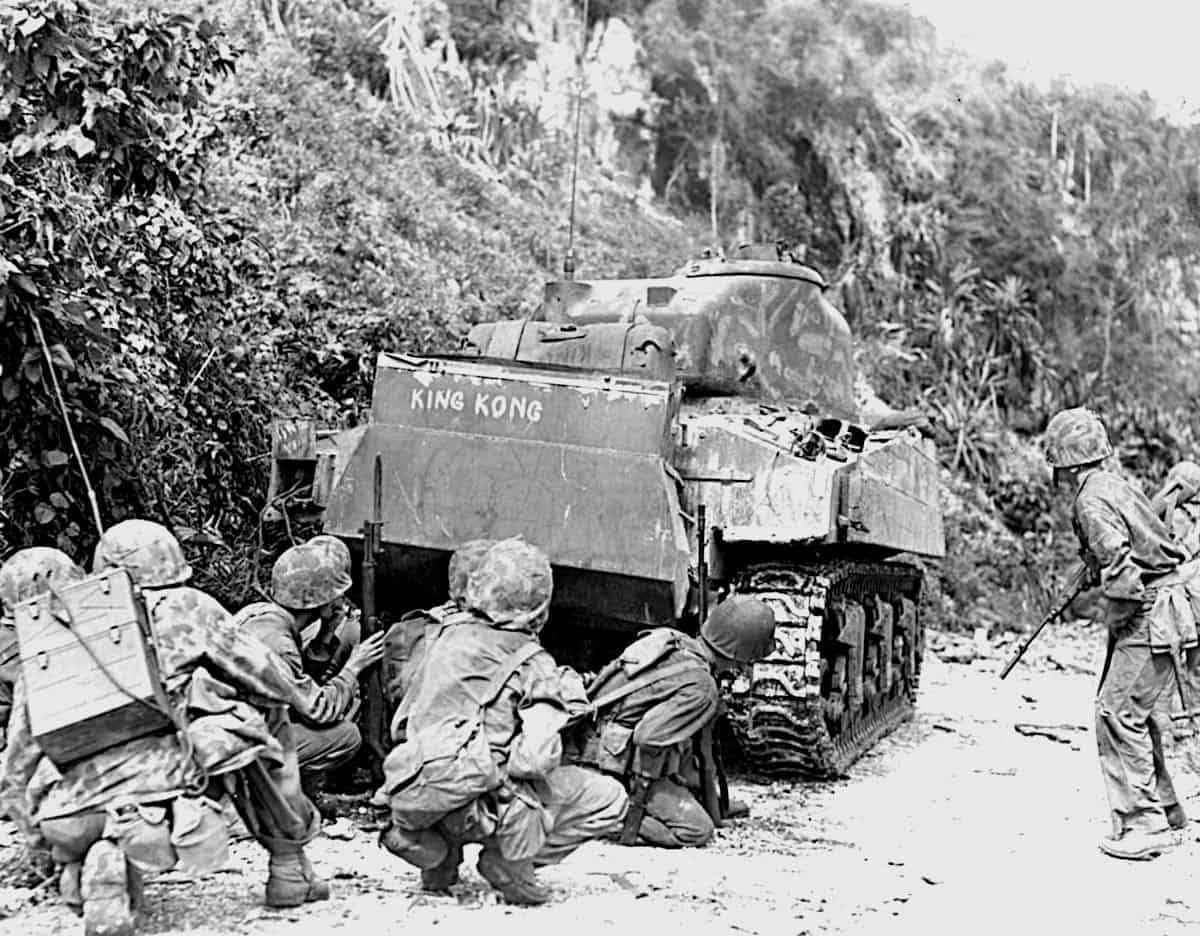
- Allied powers present: 71,000 men
- Axis powers present: 31,000 men
The amphibious assault of the Battle of Saipan was conducted in June 1944 in the Mariana Islands. The American victory at Saipan resulted in a total of 38,234 casualties – 13,313 from the Allied powers and 24,921 from the Axis.
17. Guadalcanal Campaign
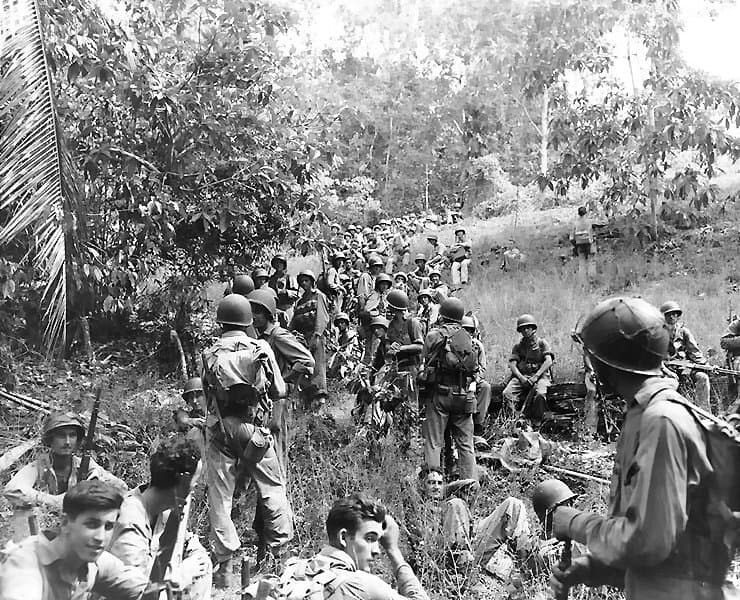
- Allied powers present: 60,000 men, 1 aircraft carrier, 2 battleships, 2 heavy cruisers, 3 light cruisers, 12 destroyers
- Axis powers present: 36,200 men, 2 battleships, 6 heavy cruisers, 4 light cruisers, 16 destroyers
On the British Soloman Islands, the Guadalcanal Campaign took place in August 1942. Also known as the Battle of Guadalcanal, and codenamed Operation Watchtower by American forces, this conflict saw an Allied victory with a total of 39,100 casualties – 7,100 from the Allied powers and 32,000 from the Axis.
16. First Battle of El Alamein

- Allied powers present: 195,000 men, 1,029 tanks, 730-750 aircraft, 892-908 artillery pieces
- Axis powers present: 116,000 men, 547 tanks, 770-900 aircraft, 552 artillery pieces
The First Battle of El Alamein was a Western Desert Campaign that took place in El Alamein, Egypt in July 1942. This battle between German and Italian Axis powers and British Allied forces resulted in a stalemate but had 44,102 total casualties – 13,560 from the Allied powers and 30,542 from the Axis.
15. Battle of Iwo Jima
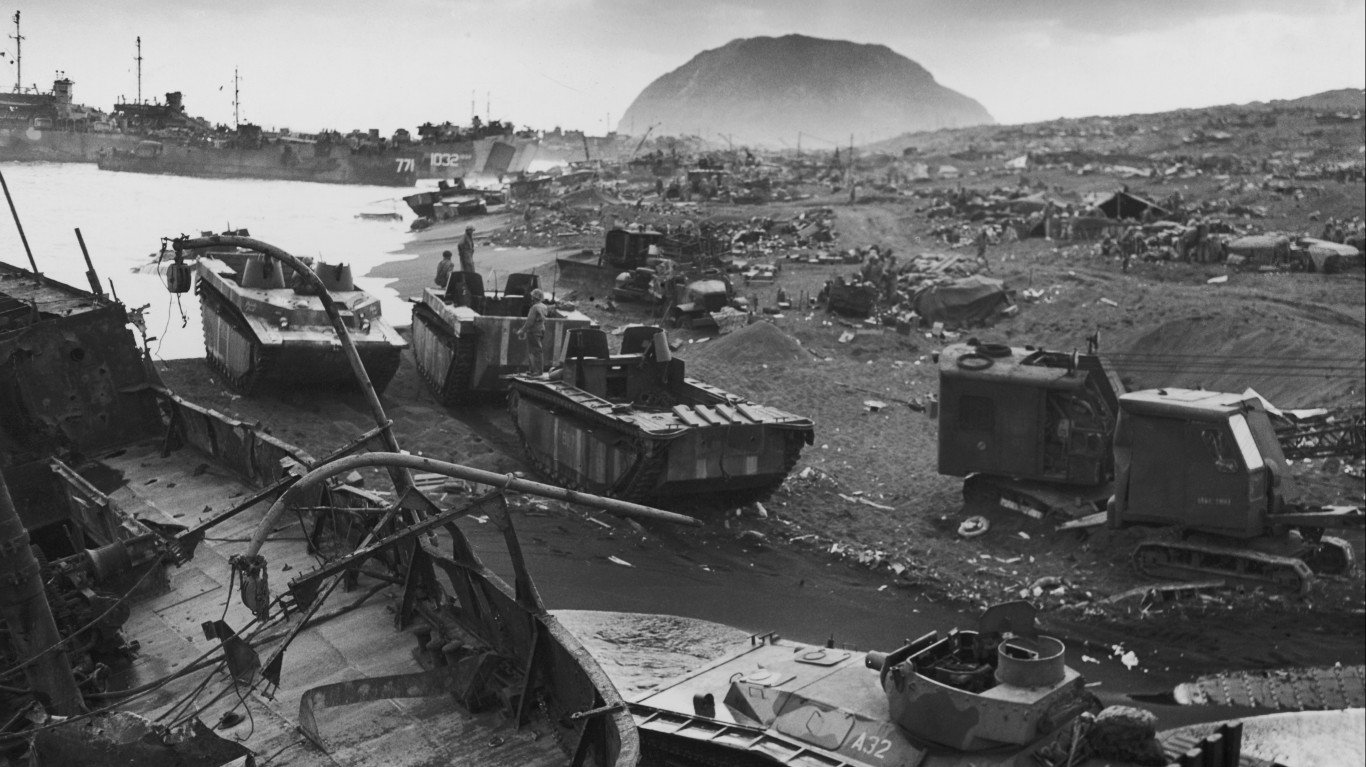
- Allied powers present: 70,000 men
- Axis powers present: 22,060 men
The Battle of Iwo Jima, known as Operation Detachment to American forces, took place in February 1945 on the island of Iwo Jima, Japan. Amerian forces were victorious but there were 48,091 total casualties – 26,031 from Allied forces and 22,060 from the Axis.
14. Siege of Tobruk

- Allied powers present: 9th, 18th, 20th, 24th Australian Brigades; 2 Australian Imperial Force, 7th, Australian Division; British 70th Infantry Division; Polish Independent Carpathian Rifle Brigade
- Axis powers present: Afrika Korps (German), Italian Army
The Siege of Tobruk that occurred in April 1941 in Tobruk, Libya ended with an Allied victory. There were 50,272 total casualties – 5,929 from the Allied powers and 44,343 from the Axis.
13. Warsaw Uprising
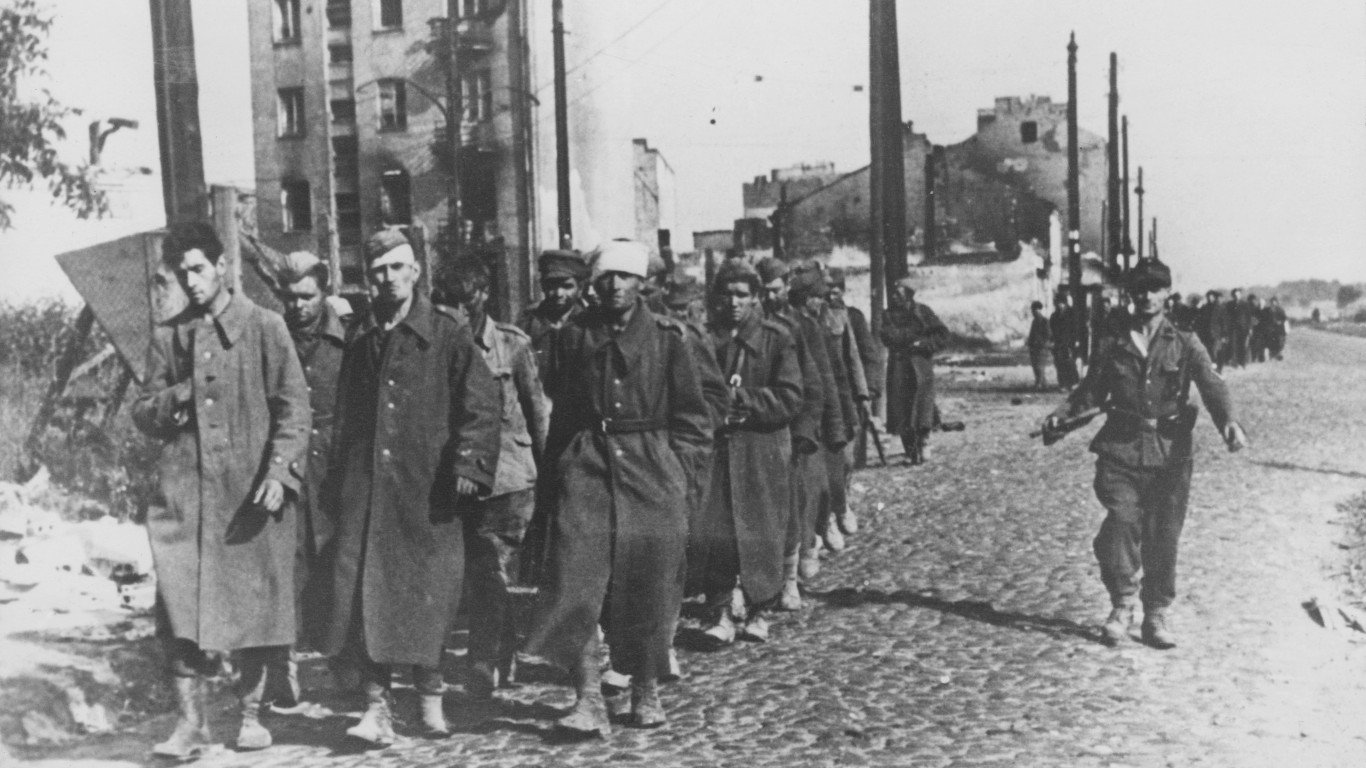
- Allied powers present: 49,000 men
- Axis powers present: 25,000 men
This operation, conducted by the Polish Resistance, took place in Warsaw Poland in August 1944. Led by the Polish Home Army, the Warsaw Uprising, also known as the August Uprising, ended with a German Victory. There were 68,660 total casualties – 36,000 from the Allied powers and 32,660 from the Axis.
12. Battle of Monte Cassino
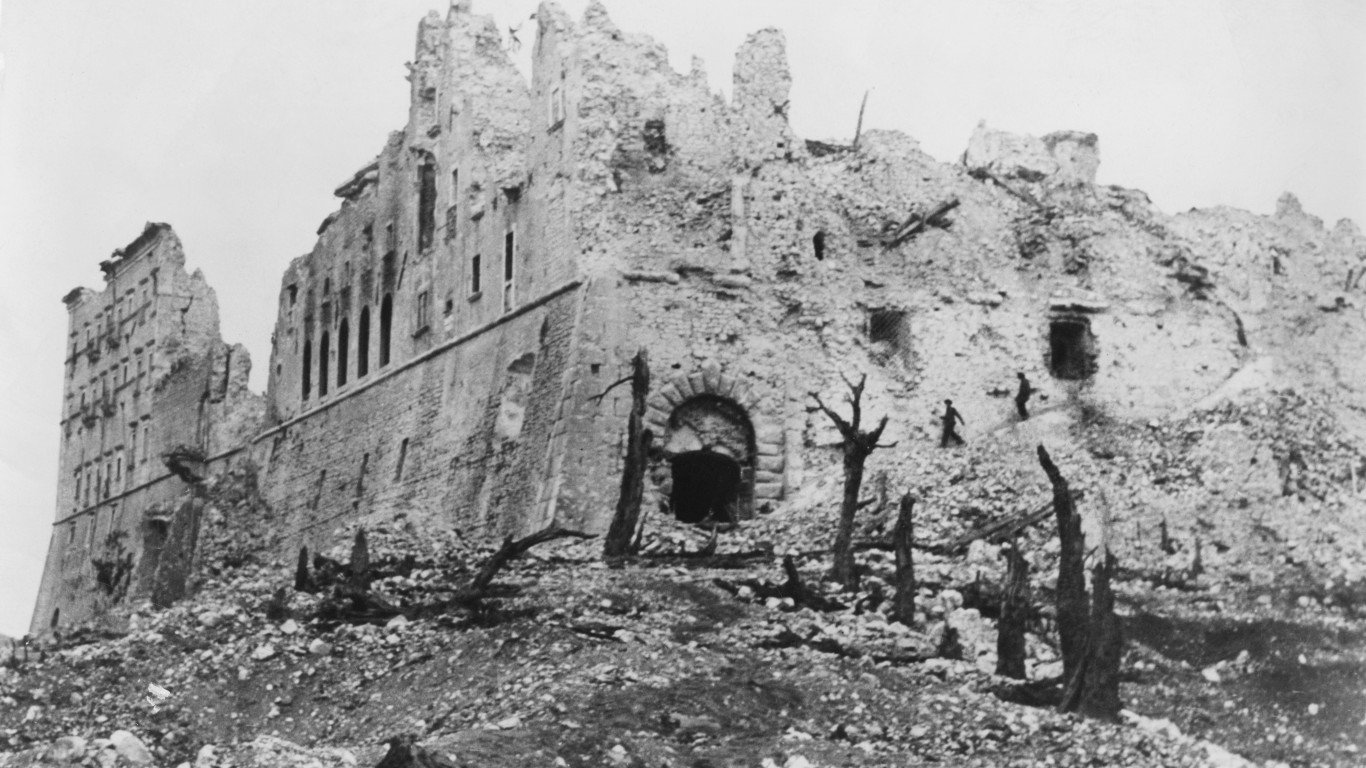
- Allied powers present: US 5th Army, British 8th Army, 1,900 tanks, 4,000 aircraft
- Axis powers present: German 10th Army
Also known as the Battle of Rome, the Battle of Monte Cassino was conducted in January 1944 in Monte Cassino, Italy, and comprised a series of four assaults. It ended with an Allied victory. There were 75,000 total casualties – 55,000 from the Allied powers and 20,000 from the Axis.
11. Battle of Dunkirk
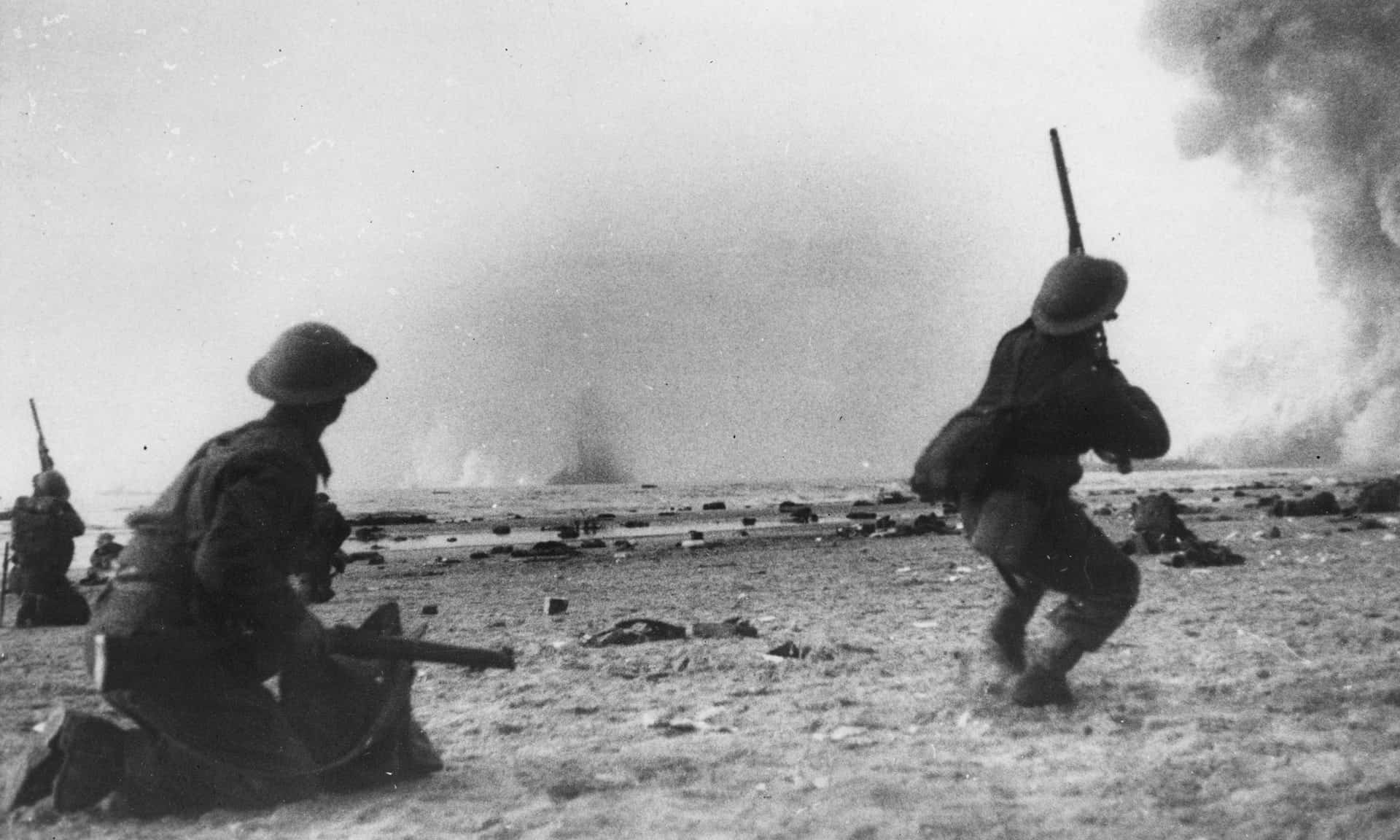
- Allied powers present: 338,226 men, 850 transports
- Axis powers present: 800,000 men
Fought in May 1940 in Dunkirk, France, the Battle of Dunkirk was conducted between the Allies and Nazi Germany and had 81,774 total casualties – 61,774 from the Allies and 20,000 from the Axis.
10. Battle of Anzio

- Allied powers present: 150,000 men
- Axis powers present: 135,000 men
This Italian campaign took place in January 1944 in Anzio and Nettuno, Italy. The Battle of Anzio resulted in an Allied victory and the liberation of Rome. There were 83,000 total casualties – 43,000 from the Allies and 40,000 from the Axis.
9. Battle of Singapore
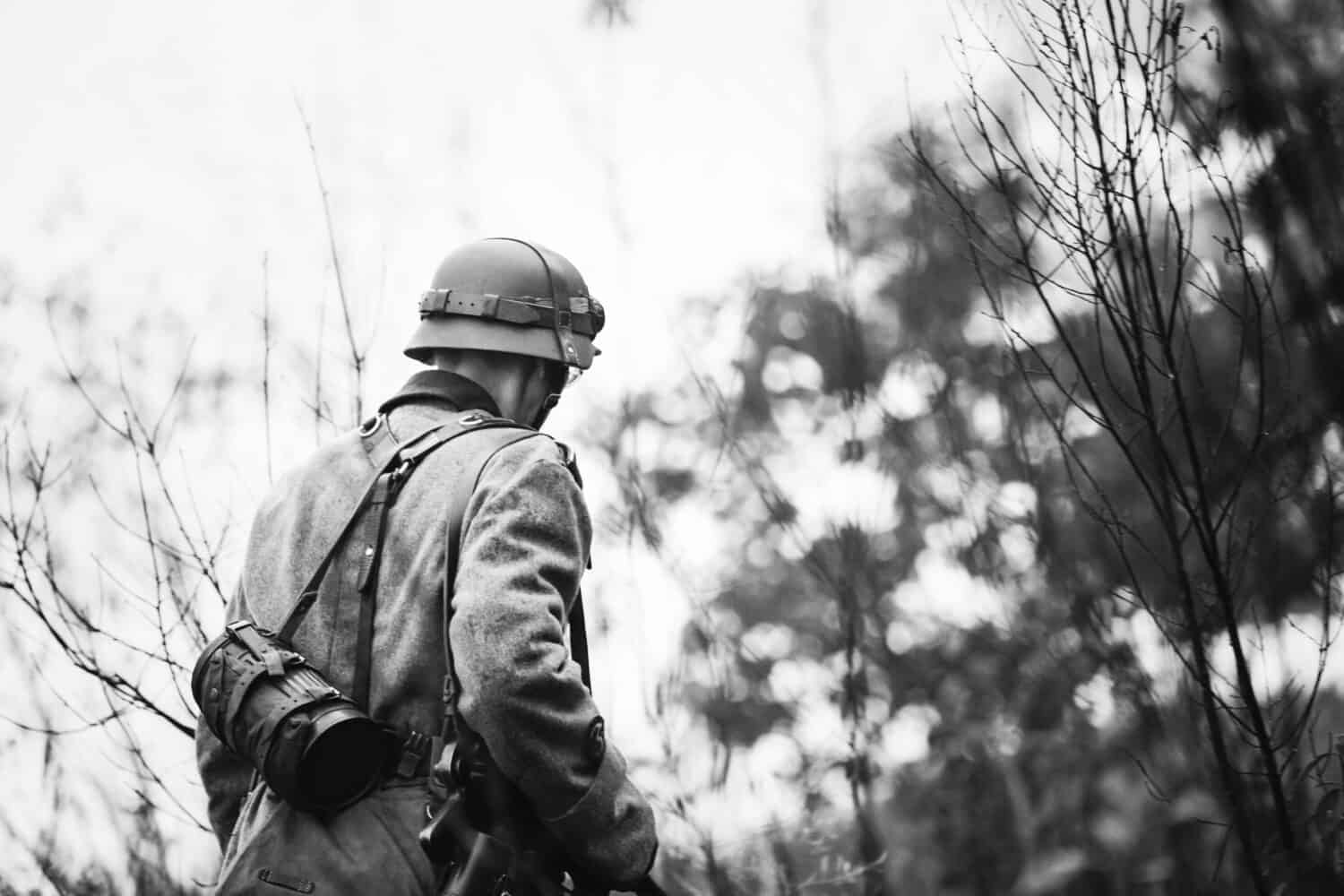
- Allied powers present: 85,000 men
- Axis powers present: 36,000 men
The Battle of Singapore, also known as the Fall of Singapore, took place in February 1942 when Japanese forces were victorious in their capture of the British stronghold of Singapore. There were 89,485 total casualties – 85,000 from the Allies and 4,485 from the Axis.
8. Battle of the Bulge
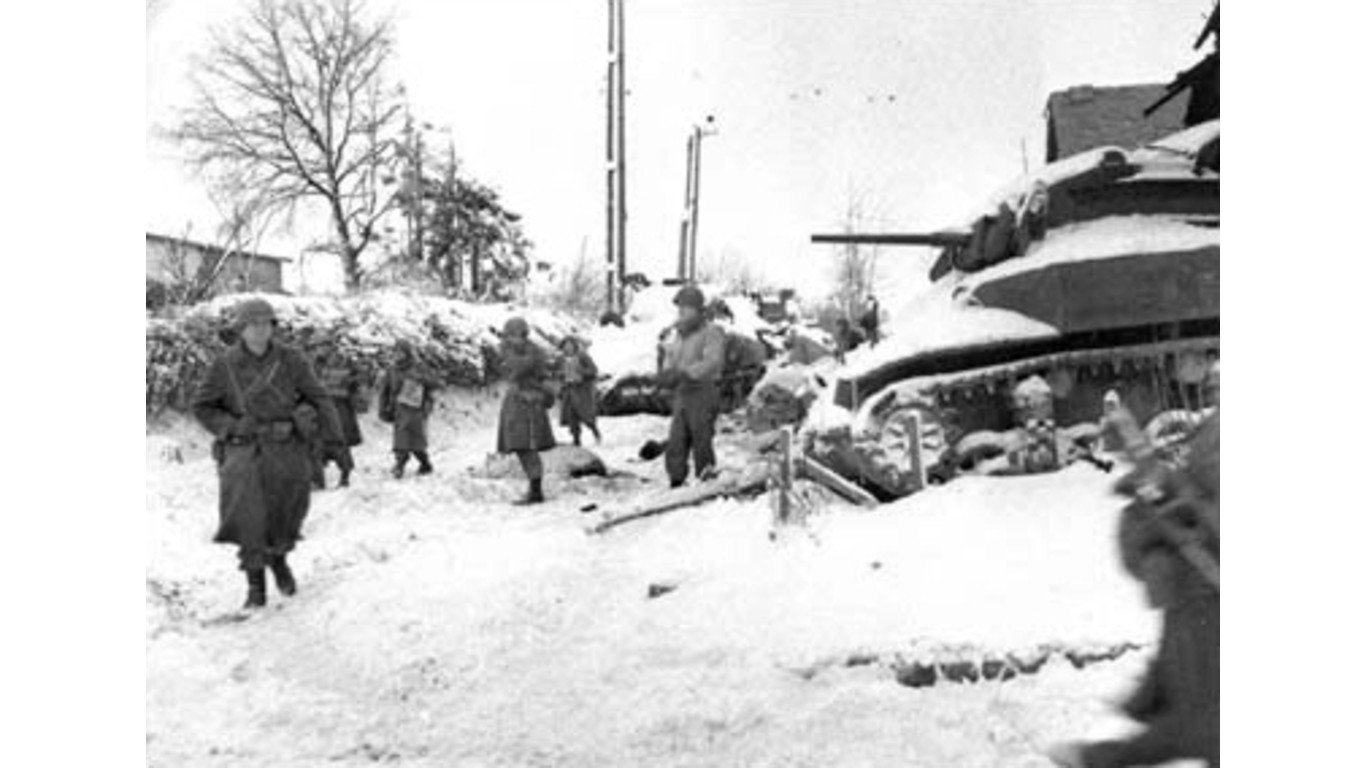
- Allied powers present: 840,000 men, 1,300 tanks, 394 artillery
- Axis powers present: 500,000 men, 1,800 tanks, 1,900 artillery
This significant German offensive took place on the Western Front in the Ardennes Forest (Belgium, Luxembourg, Germany). The Battle of the Bulge, also known as the Ardennes Offensive occurred in December 1944 and resulted in an Allied victory. There were 158,000 total casualties – 90,900 from the Allies and 67,200 from the Axis.
7. Battle of Okinawa
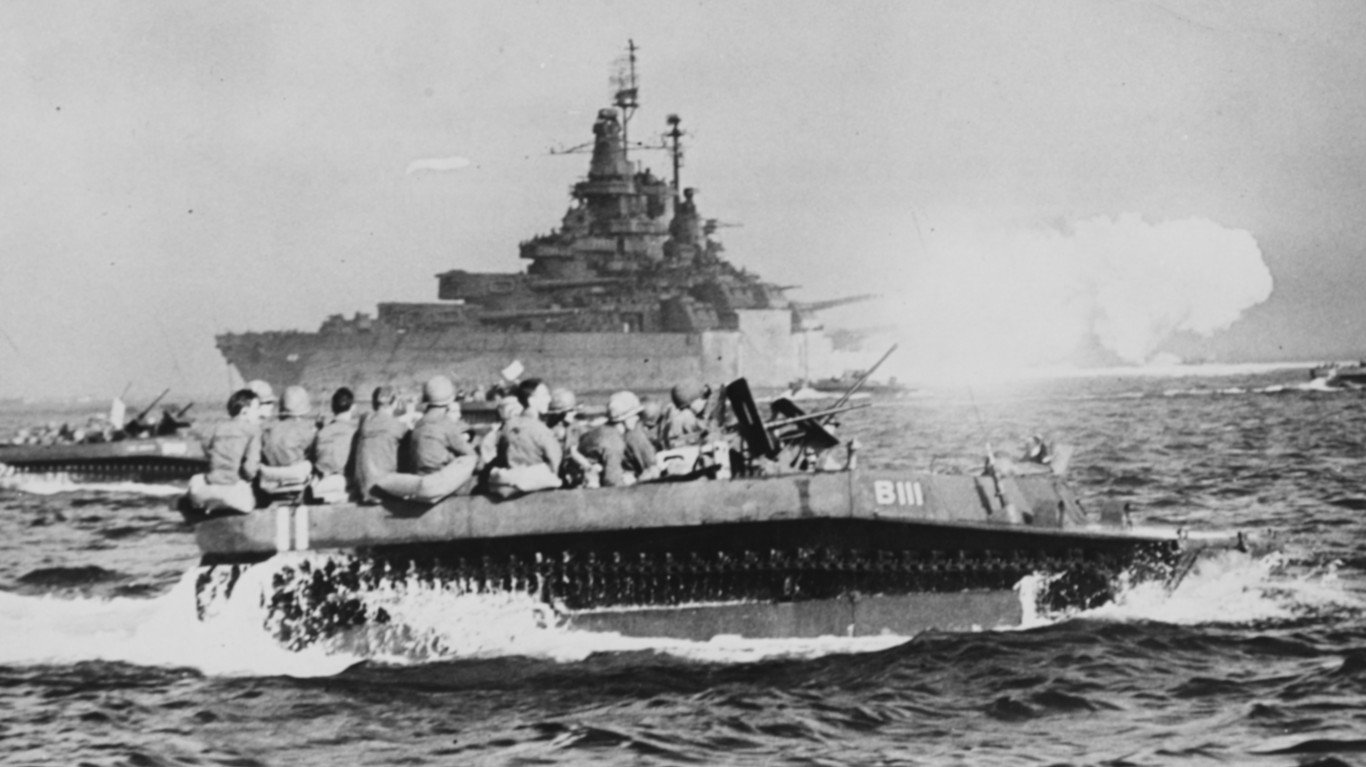
- Allied powers present: 183,000 men, 1,300 ships (including 40 aircraft carriers, battleships, cruisers, destroyers and submarines), 12,000 aircraft
- Axis powers present: 120,000 men, 1,500 ships (including battleships, cruisers, destroyers and submarines), 2,000 aircraft
The Battle of Okinawa, codenamed Operation Iceberg, was fought in April 1945 on Okinawa Island, Japan. The United States Army and Marines engaged in battle with the Imperial Japanese Army, which resulted in an Allied victory. There were 167,000 total casualties – 50,000 from the Allies and 117,000 from the Axis.
6. Battle of Sicily

- Allied powers present: 467,000 men, 600 tanks, 14,000 vehicles
- Axis powers present: 290,000 men, 260 tanks, 1,400 aircraft
This major campaign, also known as the Allied Invasion of Sicily or Operation Husky, saw Allied powers invade the Italian island which resulted in an Allied victory. There were 191,820 total casualties – 24,820 from the Allies and 167,000 from the Axis.
5. Battle of Greece
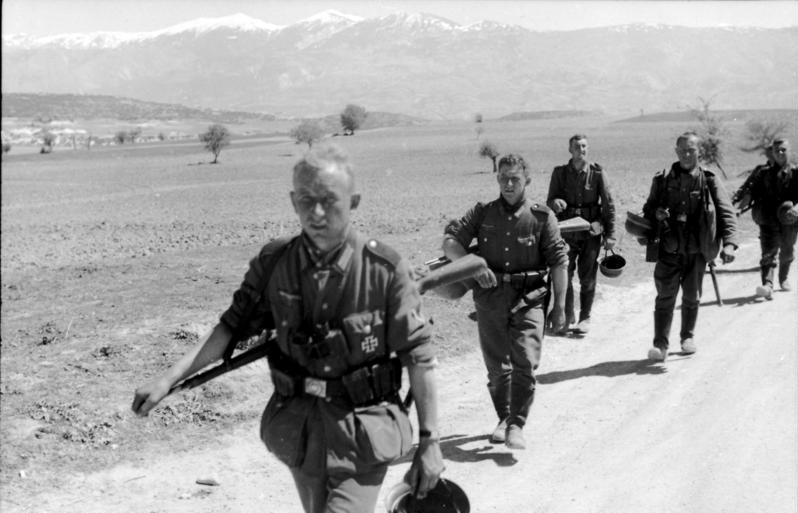
- Allied powers present: 692,612 men, 120 tanks, 200-300 aircraft
- Axis powers present: 1,245,000 men, 1363 tanks, 700 aircraft
The Battle of Greece, also known as the German Invasion of Greece or Operation Marita, took place in April 1941 and with an Axis victory, resulted in the occupation of Greece. There were 200,989 total casualties – 93,389 from the Allies and 107,600 from the Axis.
4. Operation Overlord

- Allied powers present: 2,052,299 men
- Axis powers present: 640,000 men
Part of the D-Day invasion in Normandy, Northern France in June 1944, Operation Overlord was a victory for the Allied powers. The total casualties came to 676,386 – 226,386 for the Allied troops and 450,000 for the Axis.
3. Battle of Berlin
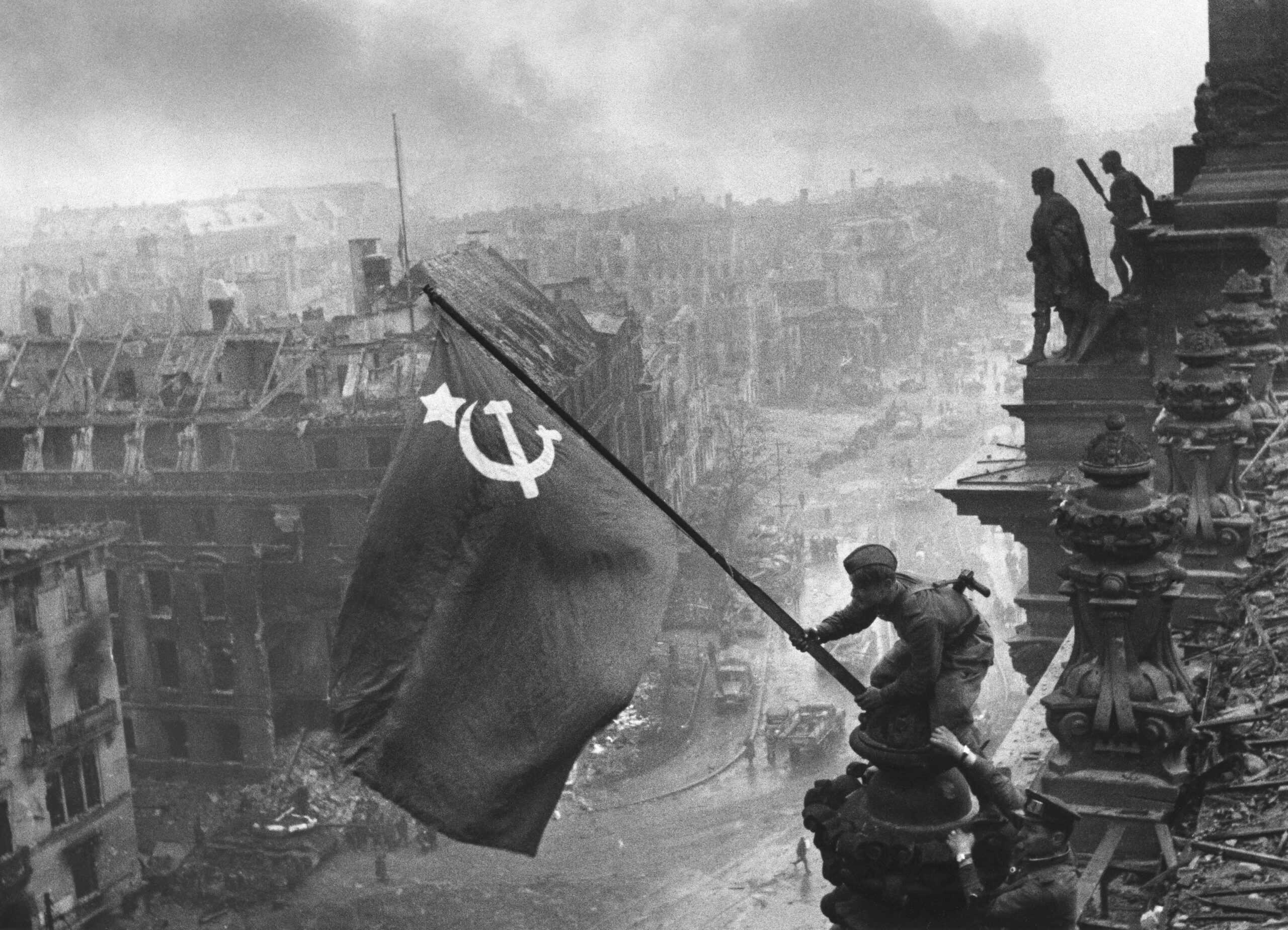
- Allied powers present: 2,500,000 men, 6,250 tanks, 7,500 aircraft, 41,600 artillery
- Axis powers present: 766,750 men, 2,224 aircraft, 9,303 artillery
It was the Battle of Berlin that proved to be the final decisive victory for the Allies and brought down the Third Reich. Fought in Berlin, Germany in April 1945, there were 1.161,367 total casualties – 361,367 for the Allies and 800,000 for the Axis.
2. Battle of Stalingrad
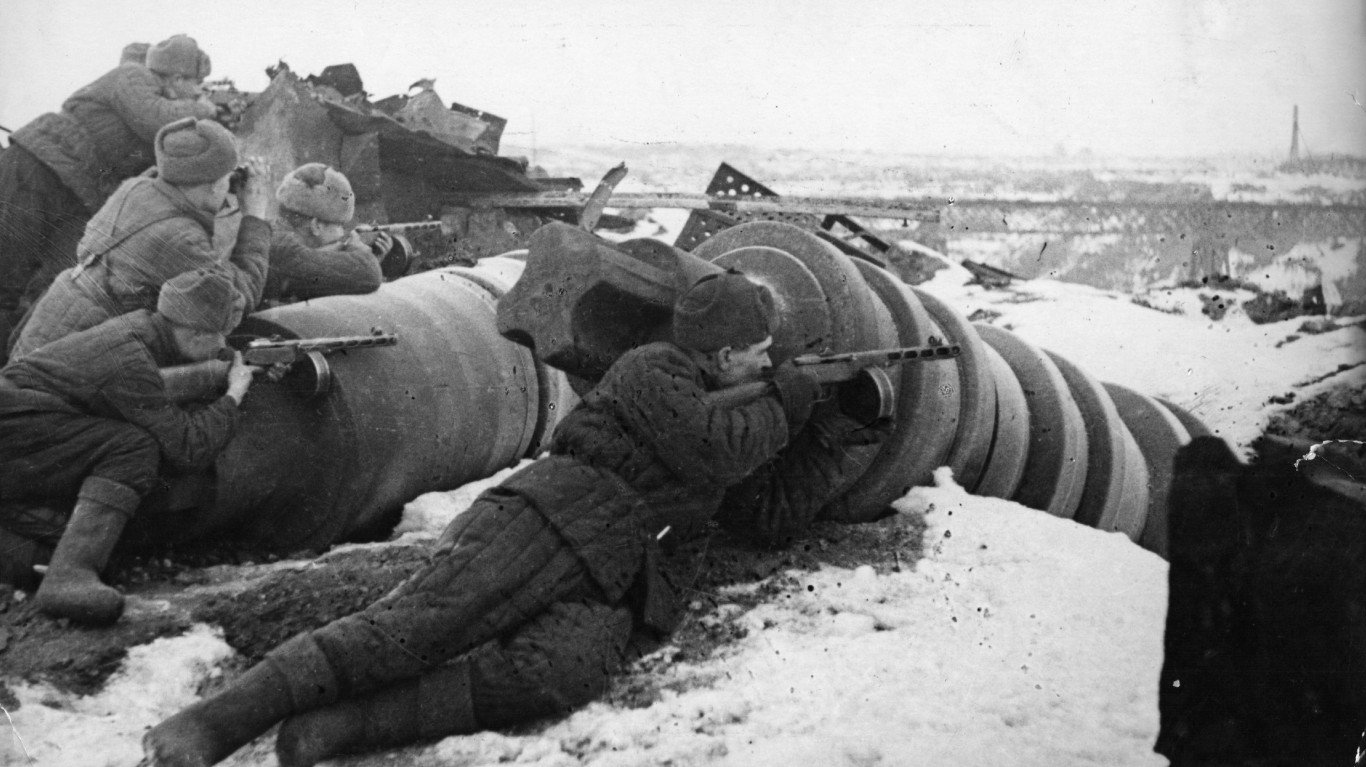
- Allied powers present: 1,143,000 men, 13,451 artillery pieces, 894 tanks, 1,115 aircraft
- Axis powers present: 600,000 men, 640 tanks, 732 aircraft
Another major battle on the Eastern Front was the Battle of Stalingrad in the Soviet Union in August 1942. This battle resulted in a Soviet victory and the total casualties were 2,197,993, of which 1,129,619 were from the Allies and 1.068,374 were from the Axis.
1. Siege of Leningrad
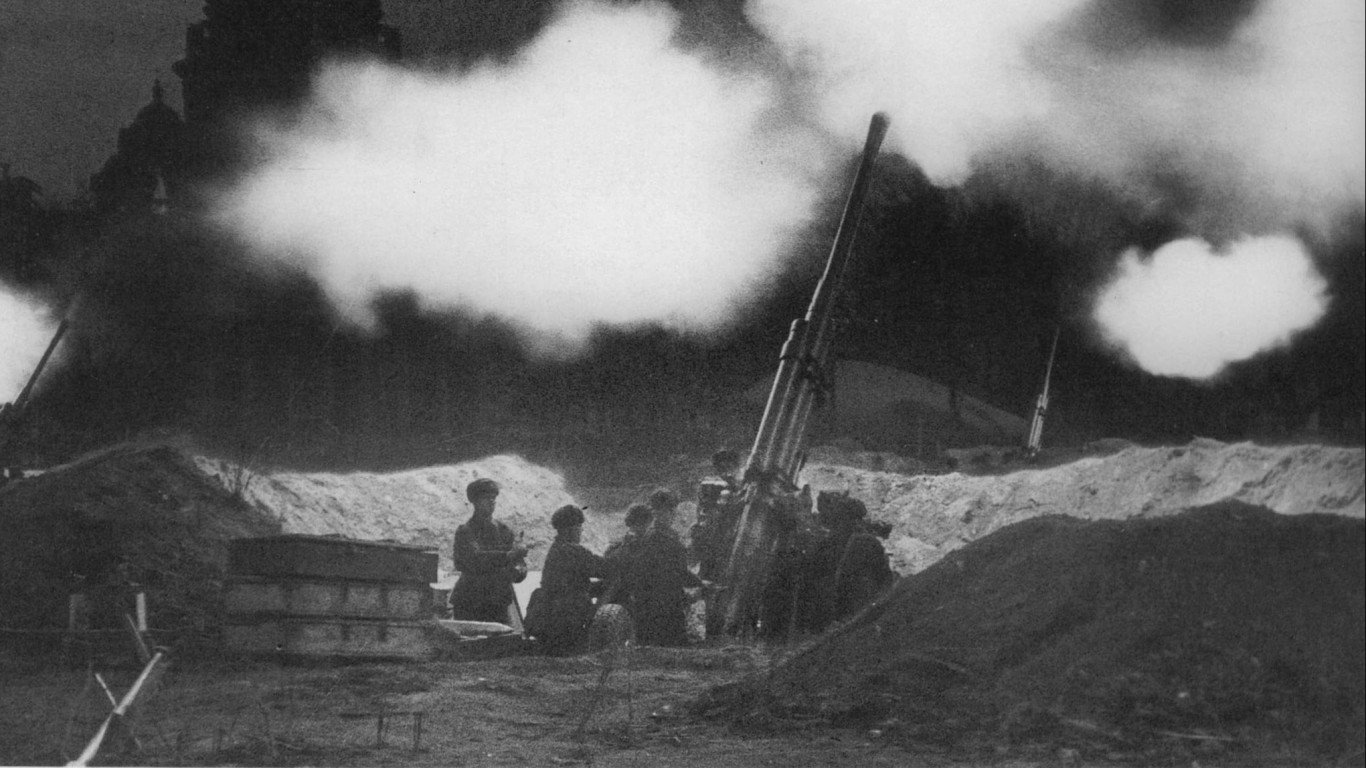
- Allied powers present: 930,000 men in initial force
- Axis powers present: 725,000 men in initial force
The Siege of Leningrad, which saw a successful Soviet victory, occurred in September 1941 in Leningrad, Soviet Union. This siege had the most total casualties of the war, 3,936,066, of which 3,436,066 were Allied forces and 500,000 were the Axis.
Smart Investors Are Quietly Loading Up on These “Dividend Legends” (Sponsored)
If you want your portfolio to pay you cash like clockwork, it’s time to stop blindly following conventional wisdom like relying on Dividend Aristocrats. There’s a better option, and we want to show you. We’re offering a brand-new report on 2 stocks we believe offer the rare combination of a high dividend yield and significant stock appreciation upside. If you’re tired of feeling one step behind in this market, this free report is a must-read for you.
Click here to download your FREE copy of “2 Dividend Legends to Hold Forever” and start improving your portfolio today.
Thank you for reading! Have some feedback for us?
Contact the 24/7 Wall St. editorial team.